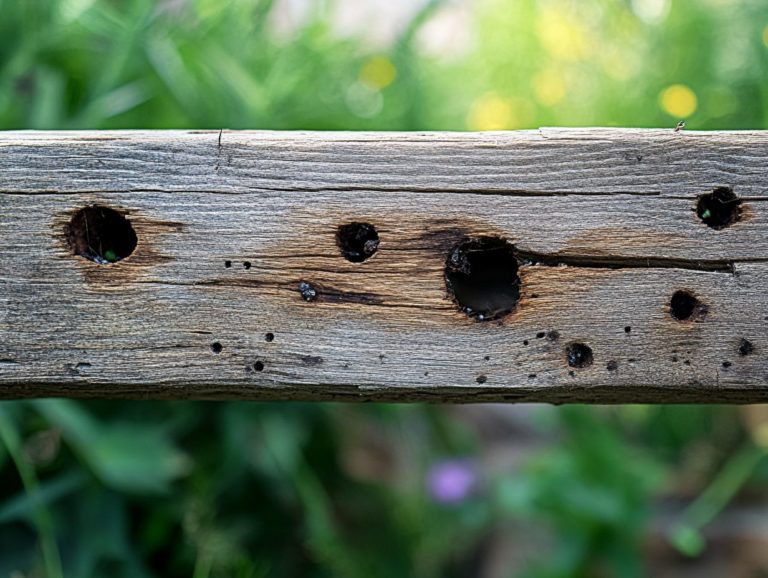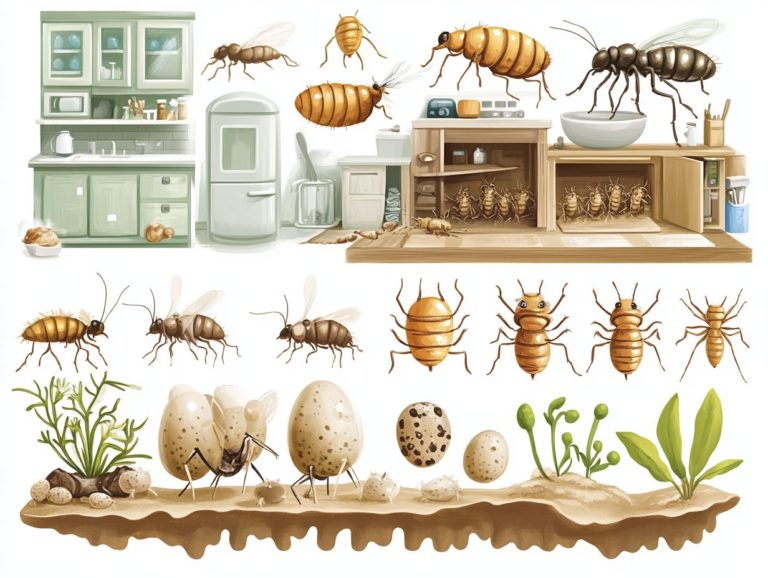How to Handle Pest Infestations During Winter
As winter approaches, you may find yourself facing an unexpected adversary: pests seeking refuge from the chill as they search for food and warmth.
Understanding the behaviors of common winter pests is essential for effective pest control and prevention. This guide will assist you in identifying signs of infestation and exploring both natural and chemical pest control methods. We will share long-term strategies to maintain a pest-free haven.
Whether you re currently dealing with rodents and other uninvited guests or simply looking to bolster your defenses, the insights provided here will empower you to keep your space comfortable and free from pests this season!
Contents
- Key Takeaways:
- Understanding Winter Pest Infestations
- Preventing Winter Pest Infestations
- Identifying and Dealing with Infestations
- Natural and Chemical Pest Control Options
- Maintaining Pest-Free Conditions
- Frequently Asked Questions
- What are some common signs of pest infestations during winter?
- What are some preventative measures to avoid pest infestations during winter?
- How can I safely handle a pest infestation during winter?
- Are there any natural remedies to get rid of pests during winter?
- How can I prevent pests from entering my home during winter and protect against diseases like Salmonella and Hantavirus?
- What are some common pests that may infest homes during winter?
Key Takeaways:

- Be aware of common winter pests and their behavior to effectively prevent and deal with infestations.
- Utilize a combination of effective strategies, both natural and chemical, to keep pests out during the winter months and ensure your home remains protected.
- Maintain a pest-free home by being vigilant for signs of infestation and implementing long-term prevention and maintenance tips!
Understanding Winter Pest Infestations
Grasping the intricacies of winter pest infestations is essential for homeowners who wish to safeguard their properties against various pests, such as rodents, spiders, cockroaches, and ants.
These pests seek refuge during the colder months, including mice and carpenter ants. They are not merely a nuisance; they also pose health risks, such as the potential spread of Salmonella and Hantavirus.
Effective pest control is paramount. The NPMA highlights the necessity of being proactive in recognizing and addressing these infestations to maintain a healthy, pest-free sanctuary throughout the winter season, especially in areas like attics and basements.
Common Pests and Their Behavior in Winter
During winter, you might find yourself dealing with rodents, spiders, cockroaches, and ants. Each of these pests showcases behaviors that help them survive in cooler temperatures and seek moisture.
As the temperature drops, these pests become increasingly determined to find refuge in your home, where warmth and moisture often prevail, especially in kitchens and bathrooms.
Take rodents, for instance. They tend to invade living spaces by squeezing through even the smallest crevices, driven by instinctual needs for food and shelter. It’s important to seal any gaps and entry points!
Spiders may enter through windows, drawn by warmth and the prospect of feasting on insects that might also have settled indoors. Then there are cockroaches, notorious for their resilience and adaptability, often lurking in kitchens and bathrooms where moisture levels are higher.
Understanding the behaviors of these pests is crucial for effective management and control strategies. By sealing entry points and maintaining cleanliness through regular cleaning and repairs, you can significantly reduce the likelihood of infestations. Additionally, learning how to handle pest infestations early can help you reclaim your space from these wintertime pests.
Preventing Winter Pest Infestations
Preventing winter pest infestations is a proactive strategy for homeowners like you, focusing on cleanliness and taking action before problems arise. By implementing effective measures, you can minimize the chances of unwelcome guests such as rodents, spiders, and cockroaches from entering your home during the colder months!
Regularly check your foundations to ensure they are secure. Act now to protect your home!
Effective Strategies for Keeping Pests Out
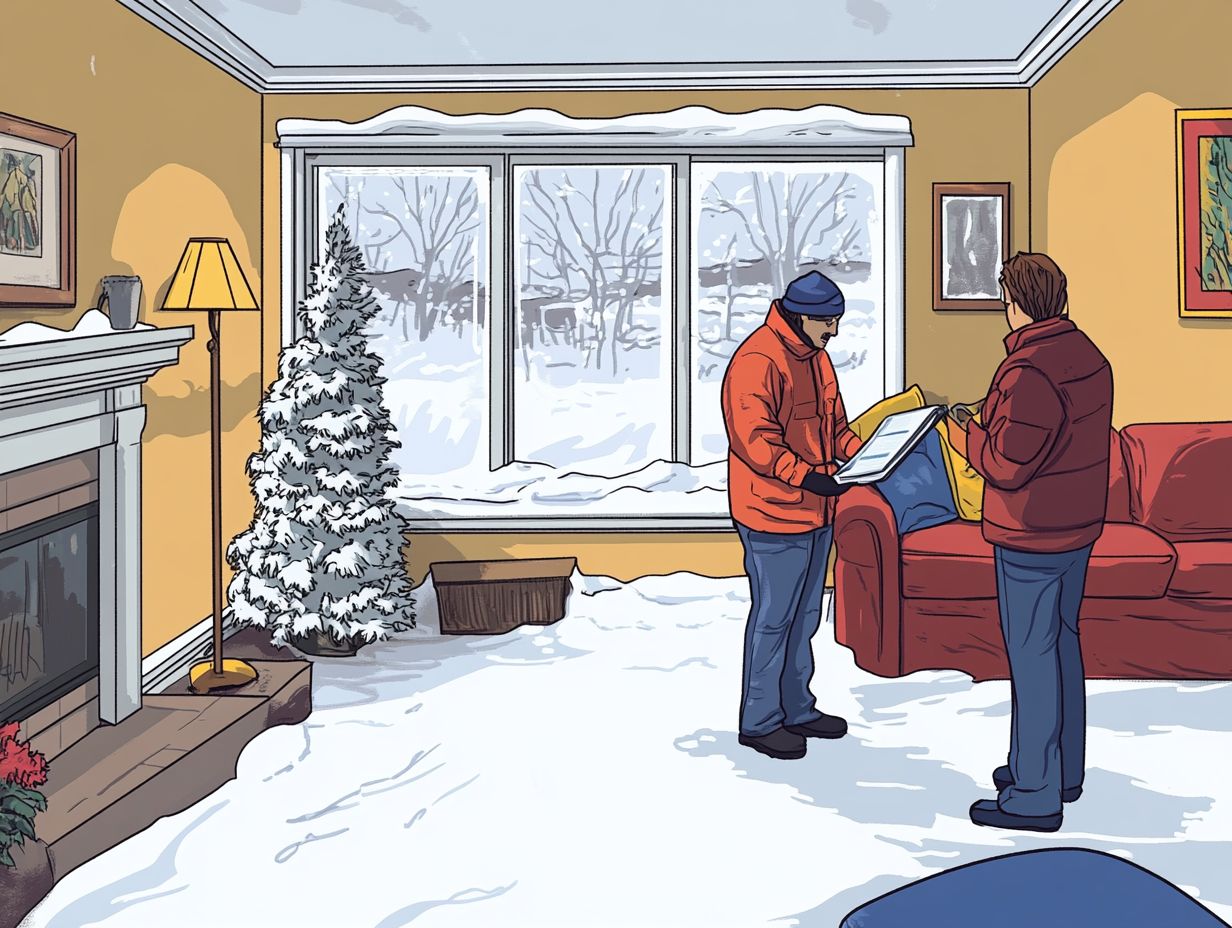
Effective strategies for keeping pests out of your home include thorough cleaning, sealing potential entry points, and managing moisture levels. These are essential elements of successful pest control and home maintenance.
You should regularly inspect your spaces. Use caulk to seal any small gaps or cracks that could serve as entry points for unwanted guests, enhancing your home’s insulation. Maintaining a clean environment is crucial. By frequently removing crumbs and cleaning up food spills, you ll eliminate food sources that attract pests like cockroaches and ants.
Proper ventilation is also important for pest prevention. It keeps the indoor air fresh and reduces humidity, making your home less inviting for pests like cockroaches and mold, which thrive in damp conditions. By implementing these measures, you can significantly decrease your chances of infestations, ensuring a safer and more comfortable living space.
Identifying and Dealing with Infestations
Identifying and addressing infestations is essential for you as a homeowner to maintain a safe environment. It’s vital to reduce the health risks from pests like rodents, spiders, and cockroaches, which can lead to serious consequences such as the spread of Salmonella and Hantavirus if allowed to proliferate unchecked.
Signs of Infestation and Appropriate Responses
Common signs of infestation, such as droppings, gnaw marks, and nests, should prompt you to take immediate pest control action to safeguard your home from rodents, cockroaches, and other unwanted pests.
You might also notice unusual odors or sounds, like scratching within the walls, which can signal a more significant problem lurking beneath the surface, often from unsealed areas. Spotting these signs early can save you from a bigger headache later!
For smaller issues, utilizing traps can be an effective first step in managing pest populations. However, if the situation escalates, it s wise to enlist the help of professionals like Kness Pest Defense or Plunkett s, who can tackle the infestation comprehensively.
If you prefer an eco-friendly approach, try natural remedies like essential oils, such as peppermint, or diatomaceous earth a natural substance made from tiny fossilized aquatic organisms that can help control pests. Understanding these signs and responding swiftly is crucial for maintaining a safe and healthy living environment for your family.
Natural and Chemical Pest Control Options
When tackling pest issues, you can explore both natural and chemical pest control solutions, including various products designed to address infestations. This opens up a range of effective options for managing pests like rodents and cockroaches.
Don’t wait! Act now to protect your home and family from pests!
Pros and Cons of Different Methods
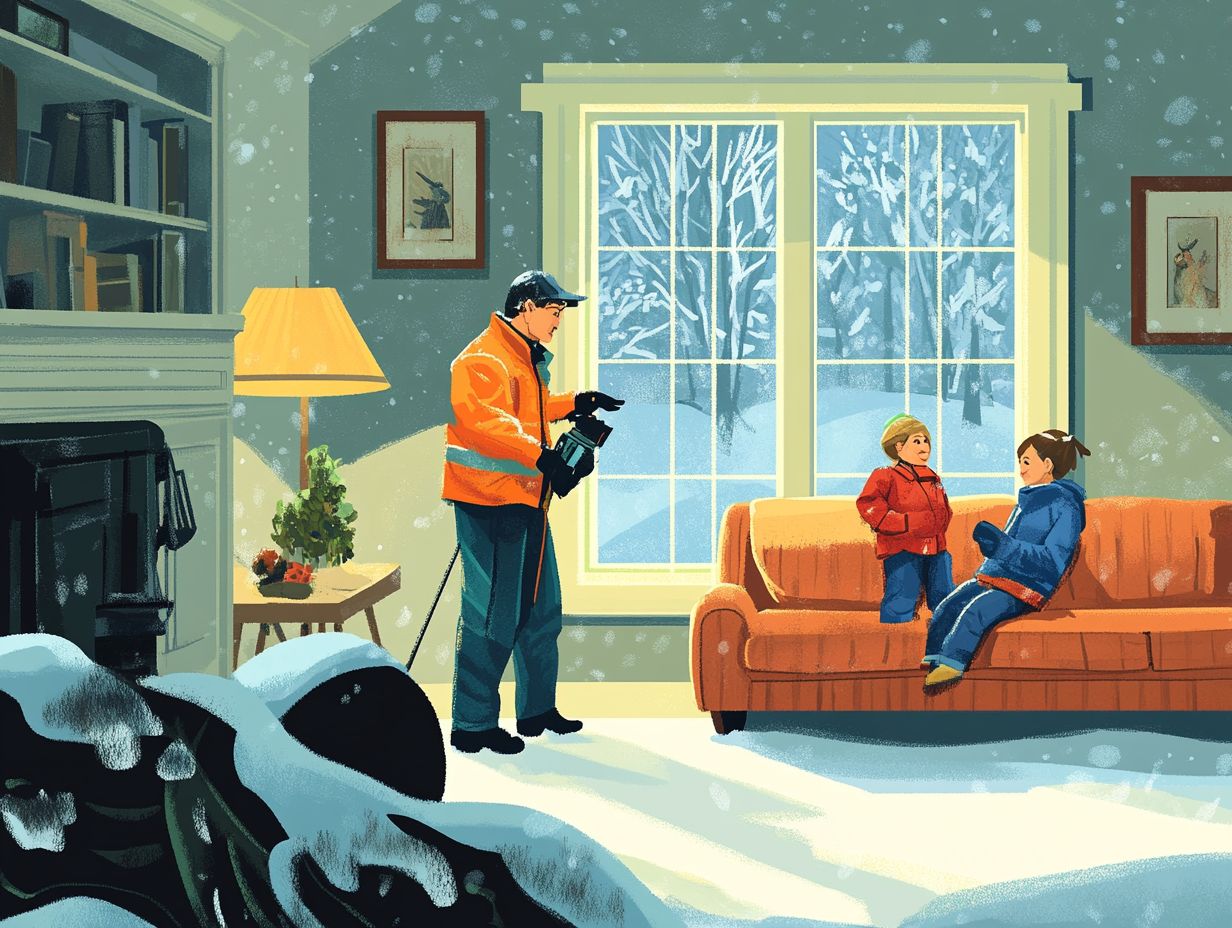
Understanding the pros and cons of various pest control methods enables you to make informed decisions about managing infestations. Whether you prefer natural or chemical approaches, it’s crucial to consider their effect on your environment.
Natural pest control methods such as introducing beneficial insects like ladybugs to tackle aphids or using essential oils like peppermint to deter rodents offer eco-friendly options. They are generally safer for families and pets than chemical alternatives. However, you may find their effectiveness to be inconsistent, often requiring more time and effort compared to immediate chemical solutions.
Chemical approaches, including sprays and baits with active ingredients like pyrethroids, deliver quick results and are typically stronger against severe infestations. This makes them a go-to choice for many homeowners. However, these chemical solutions also carry risks to human health and the environment if not applied carefully.
By weighing these factors, you can choose a pest control strategy that aligns with your values while effectively addressing your specific pest challenges. Remember to consider long-term sustainability in your choices.
Maintaining Pest-Free Conditions
To maintain a pest-free environment in your home, commit to long-term prevention and maintenance strategies. These strategies effectively deter pests, such as rodents and cockroaches, throughout the year, ensuring your home stays safe and healthy.
Long-Term Prevention and Maintenance Tips
Implementing long-term prevention and maintenance strategies is crucial for homeowners. These strategies ensure your residence remains shielded from persistent pests while fostering a clean living environment.
Prioritize regular decluttering to reduce potential hiding spots for pests like mice and cockroaches. Proper food storage such as sealing all food in airtight containers is vital to minimize attractants that lure in unwanted visitors, especially pests like ants and cockroaches.
Sealing unsealed entry points, such as cracks and gaps around windows and doors, boosts your home’s energy efficiency while acting as a formidable barrier against various pests, including spiders and termites.
Consistent maintenance routines, including monitoring humidity levels, significantly enhance indoor air quality and deter infestations, creating an unwelcoming space for pests.
By taking these proactive steps, you cultivate a healthier home for yourself and your loved ones, free from the threats posed by common pests. Act now to protect your home!
Frequently Asked Questions
What are some common signs of pest infestations during winter?
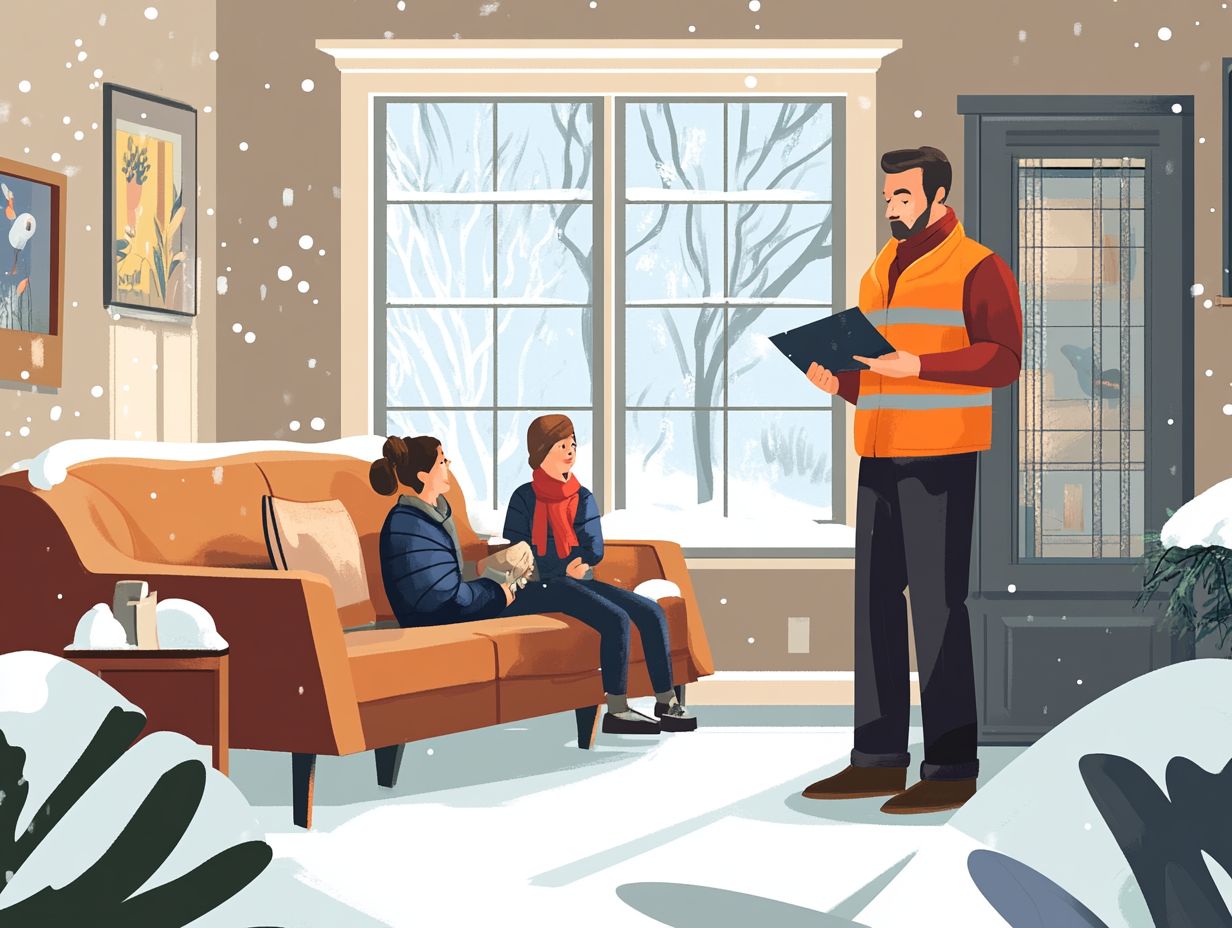
Common signs of pest infestations during winter include finding droppings, gnaw marks, and damaged food or packaging. You may also hear scratching or scurrying noises indicating the presence of rodents or cockroaches.
What are some preventative measures to avoid pest infestations during winter?
To prevent pest infestations during winter, seal any cracks or openings in your home. Keep your living space clean and clutter-free, and store food in airtight containers to deter pests like ants and cockroaches.
How can I safely handle a pest infestation during winter?
The safest way to handle a pest infestation during winter is to contact a professional pest control company, such as Kness Pest Defense or Plunkett s. They provide expert solutions with the necessary training and equipment to effectively eliminate pests while ensuring the safety of your home and family from health risks.
Don’t wait! Check your home for pests today!
Are there any natural remedies to get rid of pests during winter?
Natural remedies like essential oils and herbs can repel pests. However, they are usually less effective than professional pest control methods.
It’s best to consult a professional before trying do-it-yourself methods to ensure safety and effectiveness.
How can I prevent pests from entering my home during winter and protect against diseases like Salmonella and Hantavirus?
Your home deserves protection! To prevent pests from entering during winter, keep your outdoor areas clean and free of debris. Trim back any bushes or trees that might serve as entry points. Regularly inspect and seal any openings in your home’s exterior.
Consider installing pest control systems from reputable companies to better protect your home.
What are some common pests that may infest homes during winter?
Common winter pests include mice, rats, cockroaches, spiders, and ants. They seek shelter and food inside homes during colder months, along with seasonal pests like Asian lady beetles and boxelder bugs.


